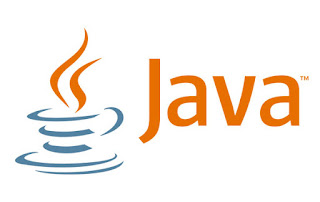Integrating Analytics and Reporting in SaaS Applications
Analytics and reporting are vital in SaaS applications, but what exactly are they? Well, analytics is all about collecting and analyzing data to gain insights, while reporting involves presenting that data in a meaningful way. So why are they important?
SaaS providers can track user engagement, identify trends, and improve their products by integrating analytics and reporting functionalities into their software. Strategies for integration include using pre-built analytics tools, creating custom dashboards, and offering comprehensive reporting options. Ultimately, these features empower SaaS businesses to optimize their offerings and provide valuable insights to their customers.
Understanding the Value of Analytics and Reporting in SaaS
Analytics and reporting are essential in SaaS applications because they help optimize performance. By using data-driven insights, SaaS providers can understand how their application is used and make improvements.
Analytics and reporting also provide benefits for user behavior analysis and decision-making. They allow businesses to track user actions and preferences, which helps them make informed choices.
Additionally, analytics and reporting have an impact on customer satisfaction and retention. By understanding how customers use the software and addressing their needs, SaaS providers can increase customer satisfaction and keep them coming back.
Defining Key Metrics and KPIs
Key metrics and KPIs are important for SaaS applications to measure success. These metrics help identify relevant data points that provide meaningful insights into user engagement and product performance. It's crucial to align these metrics and KPIs with the business goals and objectives of the SaaS application.
By doing this, companies can track the areas that matter most and evaluate how well they meet their objectives. SaaS providers can make informed decisions and improve their performance by understanding and measuring these key metrics and KPIs.
Implementing Analytics and Tracking Tools
We integrate analytics and tracking tools to gather information about users and their actions. This helps us collect data on how people use our SaaS application. We set up event tracking and conversion goals to capture a wide range of data, ensuring we have a comprehensive understanding of user behavior.
It's crucial for us to comply with data privacy regulations and obtain user consent. This means we respect their privacy and only collect data with their permission, keeping their information safe and secure.
Designing Interactive Dashboards and Visualizations
We create easy-to-use dashboards and visualizations to present the insights we gain from the collected data. Our main focus is on making them clear and simple so that users can understand the information easily. By incorporating interactive features, we enable users to explore and delve deeper into the data.
This means they can interact with the dashboards and visualize different aspects of the data based on their interests and needs. It enhances their experience by allowing them to dig into specific details, gaining more valuable insights that can drive their decision-making.
Automating Reporting and Customization
To make reporting easier, we can add features that automatically update data in a timely and accurate manner. This way, users won't have to gather information manually. Additionally, we can allow users to customize their reports according to their specific needs and preferences.
This means they can choose what information they want to see and how it's presented. Moreover, we can include scheduling and delivery options so that reports can be automatically sent out to the right people at the right time.
Advanced Analytics and Predictive Modeling
We can use advanced techniques to analyze data and find patterns and trends. This helps us understand the information better and make more informed decisions. By implementing predictive modeling, we can also forecast what might happen in the future based on past data.
For example, we can predict user behavior and outcomes. To make things even smarter, we can use machine learning algorithms to automatically analyze data and provide insights that can help businesses make better decisions. If you're looking for a leading SaaS app development company, we have the expertise to deliver high-quality solutions tailored to your needs.
Data governance and security
Data governance and security are important aspects of integrating analytics and reporting in SaaS applications:
It involves setting up policies to ensure accurate, reliable, and private data.
Implementing measures to protect sensitive user information is crucial.
Conducting regular data audits and following data retention policies help maintain data integrity.
Continuous improvement and iterative analysis
Continuous improvement and iterative analysis are essential too. This means regularly analyzing analytics data to find valuable insights. The analytics and reporting functionalities can be improved iteratively based on user feedback.
It's also important to stay updated on emerging analytics trends and technologies for ongoing enhancements. By following these steps, SaaS applications can provide their users with better analytics and reporting capabilities.
Conclusion
Integrating analytics and reporting in SaaS applications is pivotal for enhancing performance and customer satisfaction. Data-driven insights empower developers to make informed decisions. To unlock your app's full potential, prioritize these features and consider partnering with a trusted SaaS company like Finoit, led by CEO Yogesh Choudhary.




Comments
Post a Comment